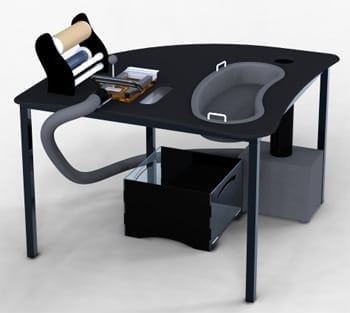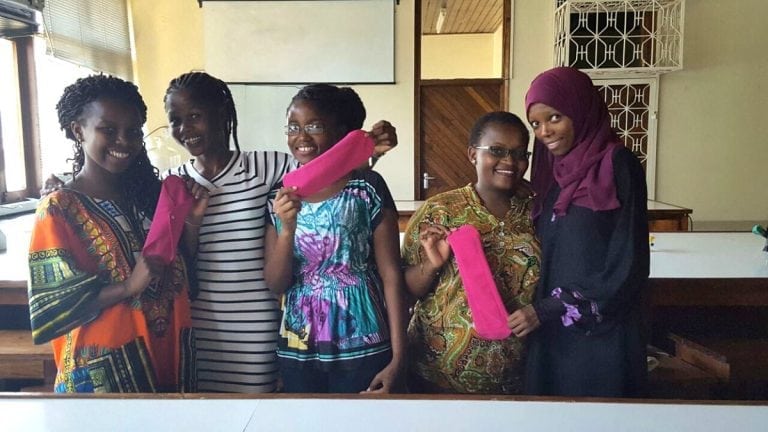
Meet “Komera,” the prototype of a machine that manufactures sanitary pads from banana-leaf fiber. Credit: Courtesy of Katherine Smyth
A plan to manufacture sanitary pads made from banana fiber in Rwanda hit a snag in field tests: The Rwandan women were skeptical of the pads’ quality. They prefer pads that look and feel like the more expensive imported pads than the locally made ones meant to replace them.
That was the lesson from field tests of a prototype pad manufacturing machine that we reported on earlier. Design changes are underway.
The pads are an early attempt to remove a little-known stumbling block to economic development in Rwanda and other impoverished countries. Some of the world’s poorest countries do not produce their own pads. Instead, they rely on expensive imports.
Women who don’t have them may stay home rather than risk embarrassment in public, skipping about 50 work and school days each year. When they must go out, some women have resorted to using rags or even bark and mud.

Komera produces pads like this one. The design is not popular among the Rwandan women tested, who prefer the look of commercially made pads. Credit: Courtesy of Katherine Smyth
Elizabeth Scharpf is working to provide financing for micro-businesses in sanitary pad production. Her organization, Sustainable Health Enterprises, specializes in developing market-based solutions to developing world problems.
Scharpf ‘s plan called for a machine that local workshops could produce and sell to women who wanted to establish a home business making pads. Katherine Smyth, a recent MIT graduate, took on the challenge. She developed a table-sized prototype that she calls a Komera.
Today, the Komera prototype consists of fancy plastics, metals, and parts that are easily found in the United States. Its final incarnation, Smyth plans to make it from simpler materials easily sourced in Rwanda. It should cost about $1000.

From banana-leaf fiber to sanitary pad. Credit: Courtesy of Katherine Smyth
The first pads that rolled out of a Komera were rectangular and bulkier than the trim designs and contoured edges of commercial pads. Smyth and her team are tweaking the machine to produce pads that resemble the ones that come out of a box. She also plans to add wings to attach the pads to underwear, she said. New tests should begin in the coming months.
For more information:
Komera’s website
SHE’s website


Am a ugandan graduate done diploma in civil engineering but jobless.i would like to preciate ur innvotion and i have googled all procedures but what i lack finance and machines, guys i need ur suport incase u can drop ur i deas to ma email gokalebo@gmail.com
Do you have an update on equipment for making sanitary towels from banana materials?
A wonderful creation you guys have made. It is necessarily to be updated from importing costly sanitary napkins to a hand made simple, hygienic and very much helpful for the needy.